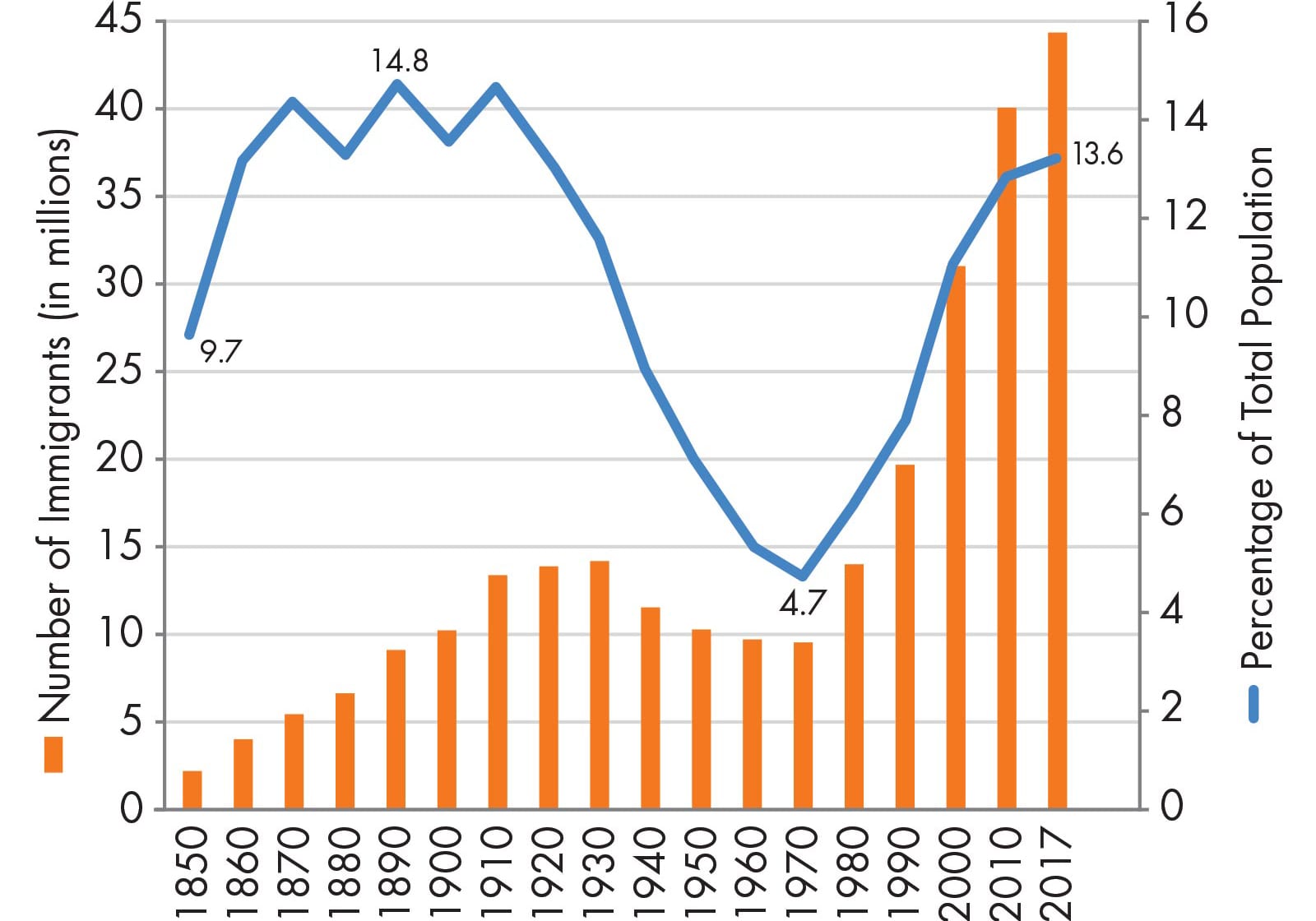Before we go further, I need some general background on immigration.
More than 40 million people living in the United States were born in other countries, and an almost equal number have at least one parent who was born in another country. Together, immigrants and their children make up almost one in four Americans. Fifty years ago, 83% of the U.S. population was non-Hispanic white. Today that proportion is about 62%, and immigration is responsible for much of that change.














